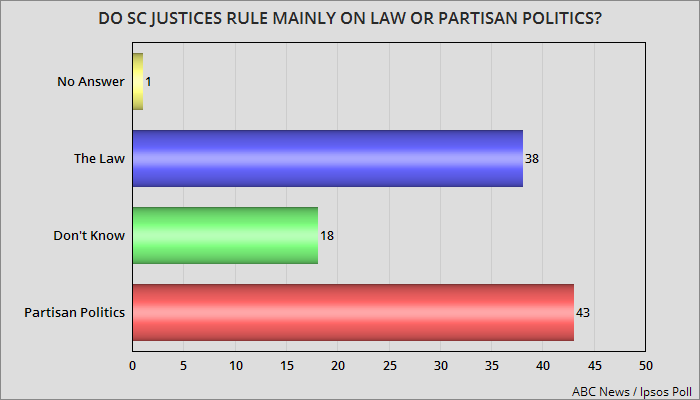The Daily Escape:
 Valley of Fire SP, NV – January 2022 photo by Robert E. Ford
Valley of Fire SP, NV – January 2022 photo by Robert E. Ford
Glad to see January go, with it being the anniversary of the Jan. 6 coup attempt and all that came after it. What isn’t going away is the slow and continuing fracture of America’s social cohesion. We also remember that it was FIVE years ago that Trump was inaugurated. That was a sorry time, since it made it clear that he would get to appoint several Supreme Court justices.
The partisan rancor brought to Supreme Court appointments has become another fault line in our social cohesion. That’s due in part to changes in Supreme Court.
One recent trend in these appointments is how much younger appointees are: The typical tenure for Supreme Court justices in the 19th and early 20th centuries was around 15 years. But as the lifespan of American adults has lengthened over the past century, so has tenure on the Court. Since 1975, the average justice has retired from the court after serving 27 years. Breyer, who was sworn in on Aug. 3, 1994, matches the average perfectly. Soon it will be longer than 30 years.
Another issue is the hubris of elderly Justices. Justices Brennan and Marshall, both about 70 years old at the time, decided not to retire when Jimmy Carter was president, thinking he wasn’t liberal enough to appoint their replacements. They decided to wait for a more left-leaning Democratic president that they presumed would come next.
Liberals got lucky when Brennan retired in 1990,and David Souter replaced him. They weren’t as lucky when Marshall was replaced by Clarence Thomas in 1992. Thomas, the first GOP Justice was selected explicitly for his race and youth (he was 43) and still sits on the Court today, 30 years later.
The same scenario played out less than two years ago with Justice Ginsburg. She refused to retire during Obama’s presidency (after a direct appeal from Obama in 2013) when he correctly feared losing the Senate in 2014. She died in 2020 and was immediately replaced by the 48-year-old Conservative Justice Barrett.
Another trend is Judicial Supremacy. Once Justices realized that their power was almost completely unchecked under the Constitution, it wasn’t a big leap to find them ruling according to personal preference.
The Framers never foresaw how formidable the judiciary would become. Once the Supreme Court successfully claimed the right of judicial review — the power to strike down laws it deemed unconstitutional — it went from being the weakest branch to the strongest. Today, virtually every important political controversy eventually comes before the Court.
The public’s opinion about the Court has never been lower. A Gallup poll last September (just before the Texas abortion cases) found that just 40% of Americans say they approved of the Court’s job. This represents a new low in Gallup’s polling, which dates back to 2000.
The chart below shows the results of a new ABC News / Ipsos Poll asking if the Supreme Court’s rulings are partisan:

(Hat tip: Jobsanger) The poll was conducted January 28-29, 2022 and has a ± 4.9% point margin of error.
It’s clear that a plurality of Americans no longer trust the Court with their lives, or with the direction of the country. That’s what makes selecting a Supreme Court nominee such a high-stakes game.
If Supreme Court vacancies were more frequent and regular, confirmation battles would be much less likely to turn into political Armageddon every time. We should be asking whether life tenure for Supreme Court justices still is legitimate, regardless of which Party controls Congress or the White House.
The Framers of the Constitution feared that the judiciary would be the weakest of the federal government’s branches and the most susceptible to political pressure. They therefore sought to bolster the Court’s independence by ensuring justices could stay on the bench for as long as they wished.
But the only alternative to a bad Court decision today is for 2/3rds of both Houses of Congress followed by 3/4ths of all States to change it by Constitutional Amendment. A nearly impossible and time-consuming process.
Instead, we should enact term limits for the Supremes. With nine Justices, one Justice’s position should expire every two years (essentially giving each an 18 year term). After serving on the Court they could fulfill their lifetime appointment by continuing to serve as “Justices Emeritus” on one of the regional Courts of Appeal.
This isn’t a partisan idea. Many Republicans endorse term limits. Among those who have endorsed it is Justice Stephen Breyer. Numerous polls in recent years show widespread support across Party lines for limiting Supreme Court justices’ terms. Everyone can tell that life tenure on the Supreme Court isn’t working. It’s time we replaced it with something better. America’s social cohesion depends on it.
Speaking of social cohesion, spend a few minutes watching this affecting commercial for Heineken. It celebrates communication, listening, and getting to know others who have different viewpoints:











